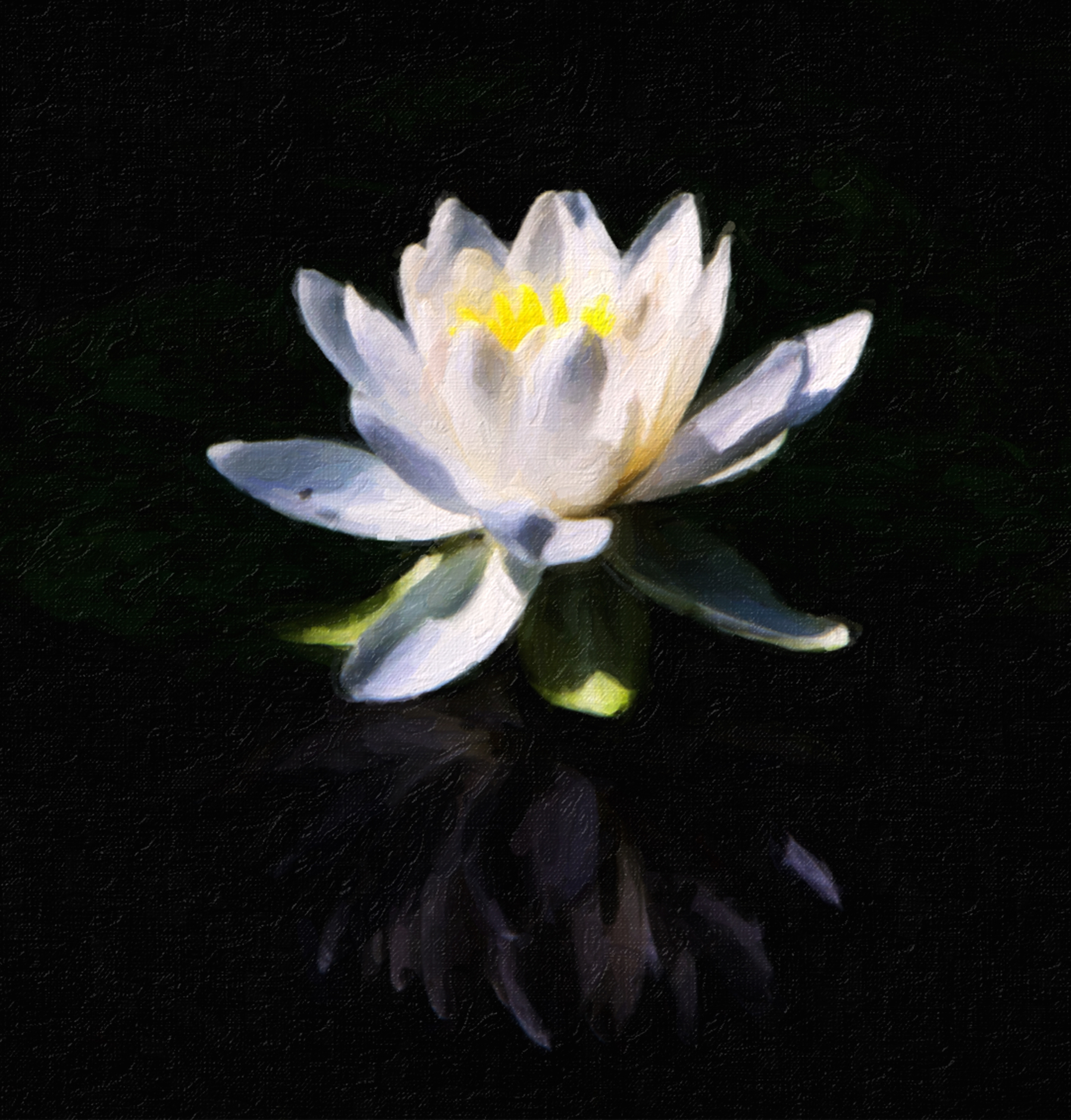Thoughts are Prayers – for Better or Worse
Thoughts Are Prayers
This topic, “Thoughts are Prayers – for Better or Worse,” is what you might call the “and Spirituality” side of Cannabis and Spirituality—not directly about cannabis except that with skillful intention and attention, the holy herb can be a powerful tool for self-exploration and understanding in meditative contexts.
I’ve been aware of this general principle for a long time. Aphorisms such as “You create your own reality” or, “You are what you think” come readily to mind. In similar words, a Native American spiritual elder once told me, “However you say it is, that’s how it will be for you.”
I was at a Santo Daime ayahuasca ceremony recently and one of the two ceremony leaders gave us a teaching talk in the middle of the ceremony while the ayahuasca was running strong. Perhaps in part because of my heightened state of receptivity at that point, his way of communicating this idea struck me forcefully and I promised myself I’d remember it for later and work more consciously with the teaching in my daily life.
What’s in a Thought?
It’s a powerful idea. Every thought we have has an effect on our state of mind and body, both in the moment and in our ongoing experience. Of course not every little neutral thought running through your head is going to affect your life experience. We’re talking about thoughts with more significant potential repercussions. Examples on the ‘negative’ side would be thoughts that are angry, blaming (self or others), guilty, undermining (self or others), judgmental, despairing, fearful, and many more. I’m sure we could all come up with a long list of negative-pattern thinking, what the Alcoholics Anonymous people have called “stinkin’ thinkin’.”
The word “thoughts” deserves clarification too. Thoughts aren’t always obvious. They don’t always come in the form of language. They also sometimes fly past so fast you don’t even know you’ve had a thought. And sometimes they’re only experienced as feelings or energetic imprints. You might, for example, consider anger a feeling rather than a thought. But if you observe those moments carefully you’ll see that the feeling was triggered by a thought, or at least came bundled with a thought. Thoughts, acknowledged or not, also provide the fuel that keeps the energy of the emotion going.
Energized Presence, Not Self-Absorption
The first implication of this principle is that for anyone whose intention is to wake up, to be happy, it’s essential to practice mindfulness. That is, as a starting point our task is to be aware of our thoughts—watching the quality and nature of those thoughts.
In case anyone reading this interprets the above as an exhortation to go down the rabbit hole of self-absorbed navel-gazing, that would be a misinterpretation of this principle. Buddhist teachings talk about practicing mindfulness and awareness together. Awareness is more about being fully present with the world around you while mindfulness suggests attention to the details of experience within that broader, panoramic awareness. So paying attention to the thoughts that arise doesn’t require a self-absorbed inwardness. It can be done with a light touch within the field of outer-directed attention. It’s about becoming more accessible and connected to life, not more self-absorbed.
Of course it’s easier to watch what arises in a meditative situation where distractions from activity are minimized. But it’s still very possible and just as important—if not more so—to see thoughts arise throughout the daily walk.
Recognition—Then What?
So what does one do with that recognition? For starters you may have to proceed on the tentative faith that your charged thoughts do indeed have a potent influence on your experience. Then the first level of working with them is just to observe, without “praise or blame” as a Buddhist teaching goes. From there it could get a bit tricky and I don’t claim to fully understand all the possibilities and nuances.
Buddhist teachings understand this principle and talk about “mind protection.” One of the slogans is “Change your attitude and relax on the spot.” The Santo Daime ceremony leader talked about purifying our thoughts. For example, since that ceremony I’ve noticed a few incidences where I’ve started to work up a narrative of complaint about a relative. Sometimes I’ve been able to catch the moment and let it go on the spot.
We all have to find our own way to bring this into the daily walk. What seemed to work for me in those moments was to bring down some purifying light or energy, drop that line of thinking, and focus on sending out kind thoughts and/or energy, or even, as the slogan just mentioned says, just letting it go and relaxing, coming back to full mindfulness and awareness in the present moment.
Releasing and Transmuting
To be clear, it’s not necessarily a matter of trading one kind of thought for another, as in telling yourself to replace an angry thought with a loving one—although there is good research now indicating that that kind of practice can create powerful changes in the mind body, especially when the thought/intention is energized and arises from a deeper than Alpha-wave state.1
I see the process also as an energetic one: breathe, come down out of the head, release, and relax. From there, as I implied, the techniques may vary from doing nothing more than being fully present to, for example, working with visualization practices. The Tibetan Buddhist practice of Tonglen is a good example of how to transmute negativity into positivity. Simplified, it can go like this. You might put your attention on a person you’re having judgmental or angry thoughts and feelings about. They call that dark, heavy energy. You breathe that in and then transform it into white, healing, kind, loving light/energy that you breathe out with that person in mind. Tonglen can also be used to transmute counter-productive thought patterns directed at oneself.
Another key to the success of this kind of life-changing practice is acknowledging one’s attachment to the narrative. We often stubbornly cling to our story, for example, saying to ourselves something like, “I have a right to be pissed off.” But self-justification can be your enemy. Letting go of such narratives also implies forgiveness, both to yourself and others. In this context forgiveness is a practice in the moment. Releasing or transmuting the story often has a built-in forgiveness component.
Speaking of mind protection, as much as the fruition of this kind of effort is a benefit for those around us and even beyond, at the foundational level it’s about looking after oneself properly. In layperson’s terms, “negative” thoughts release toxins into the system, both psychologically and bio-chemically. The path quality of this work is learning to recognize ever more clearly that we are what we think and that we have more control over that than most people realize. It’s about stepping into a sense of responsibility for your state of mind and your experience of life.
Change Without Blame
For anyone reading this who is living with a serious debilitating health condition, I want to stress that this kind of taking responsibility for the influence of our thoughts on our organism is absolutely not about blaming oneself for the condition. The electrical signals that may have initially triggered physical responses could have happened in infancy or even in the womb, long before any kind of intellectual processes were in place. The whole point of a discussion like this is to encourage the possibility of change, the understanding that conditions may not be as fixed and permanent as we’ve been conditioned to believe. Self blame is actually another way of sending destabilizing messages to the organism. It’s those kinds of messages we need to catch and release and/or transmute.
I also want to clarify that this “catch and release” or “catch and transmute” program isn’t a passive or detached attitude of non-engagement, like some sort of new-age, it’s-all-love-and-light attitude. Sometimes we need to be direct and tell people how we’re feeling, how we see the matter. That will be obvious to many but not all. There are ways to be skillful, humble, and open about that kind of engagement and at the same time strong and authentic.
To all this you might be thinking things like, “Sure, easy for you to say but I’m different than most people” or “It’s hard” or even, “I don’t deserve to be happy.” (That last one could be one of those slippery little demons that sneaks in the back door unrecognized.) These are all thoughts though, aren’t they? That’s what’s meant by “thoughts are prayers” and according to both ancient wisdom and current research, those negative thoughts are creating spiritual conditions and in fact actual “grooves” in the brain and physical response patterns in the body altogether. A Native American aphorism sums up the impact of negative thinking succinctly: “Worrying is how white men pray for what they don’t want.”
Cannabis: An Energy Medicine
Bringing it back to cannabis as a spiritual ally, with disciplined use cannabis can function as an amplifier. If we can catch and release negative thought patterns and empty into presence, the enhanced energy can heal, and if we can release those thoughts and replace them with life-affirming thoughts, i.e, prayers, cannabis can help strengthen the energetic imprint. As Joe Dispenza describes it in his important book You Are the Placebo, the energy of the new intention has to be stronger than that of the old embedded thought pattern. Energized clear intention creates new brain and body pathways and again, when the energy of cannabis is skillfully directed, that energization is amplified.
May mercy reign.
Notes:
- See, for example, the work of Dr. Joe Dispenza, such as his recent book “You Are the Placebo.” Dr. Dispenza makes a compelling case for the life-changing power of mind over matter, supported by quality real-world studies and extensive recent research in fields such as biochemistry.




Using cannabis as a plant ally, would you suggest a certain strain of CBD or THC?
DianeReviews
Hi. There is no quick or simple answer to that question other than to say “research and experiment.” It depends on what specific ways you’re thinking of using cannabis as a plant ally. Each person is different too. You may already know that Sativa strains tend to be more energizing and Indica more relaxing and possibly drowsiness inducing. There’s a kind of trade-off. The energizing effects of Sativa dominant strains can be good for wakefulness in meditation. Some of them are even described as “psychedelic.” But Sativa strains often stimulate the thinking mind more and that can be an obstacle to emptying the thoughts in meditation. Indica dominant strains may not be as stimulating of thought and may be more relaxing. The downside of those can be that you become too drowsy or sleepy in meditation.
I’d suggest a hybrid somewhere around the 50/50 point as a starter and then experiment. The more you read and ask around, like at dispensaries, the more you’ll find a strain that works for you. Then the challenge is the one facing all humans: how to get out of your own way and empty into the present moment, allowing the sacred herb to do its work unobstructed by your obsessive mental busyness. Then it can open the heart and enter you into a state of calm energized presence.
You’re welcome to write again. Stephen
StephenReviews
Hello again Diane. I was just looking at your question and my reply again and realized I didn’t directly answer the CBD vs THC aspect of it. Again, it depends on several factors: your sensitivity to the plant, your readiness and willingness to go into deeper states, your ability to quiet the mind at least some of the time, and so on.
THC is the powerful mind-altering cannabinoid in the plant. Although CBD doesn’t produce a “high,” people report that it is calming and can establish mental and physical stability. That in itself can be of benefit for silent meditation practice. The purpose of practice is to see our thoughts clearly and allow some gaps in the thinking mind so that our natural tendencies toward unconditional intelligence, calmness, and open heart can manifest.
For working with deeper spaces and more powerful openings I would think that strains without a lot of CBD would be preferable since THC and CBD trade off with each other. That is, the more of one, the less of the other. See also my previous reply on the sativa/indica issue. I think I’ve addressed aspects of this issue in some of the posts on this website as well. The forthcoming book “Cannabis and Spirituality” (Park Street Press, Jan. 2017) with 18 contributors goes into depth on working with cannabis as a spiritual ally.
StephenReviews